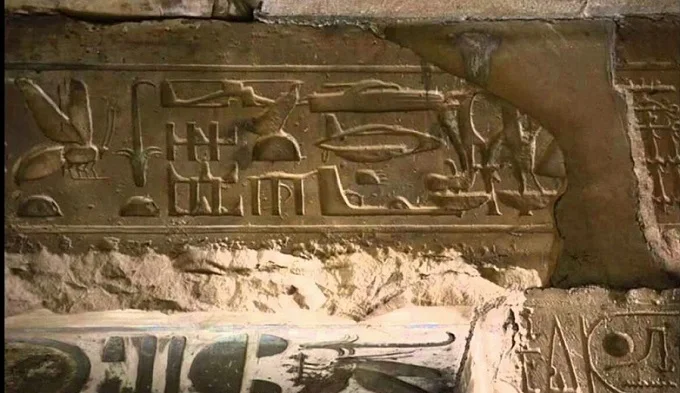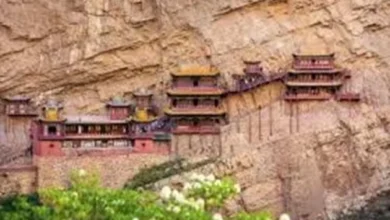Abydos temple and mysterious hieroglyphs

While working in Abydos above the entrance to the temple in 1848, archaeologists discovered mysterious hieroglyphs. At that time, there was no aviation, and the researchers did not attach due importance to their findings.
In ancient Egypt, the temple complexes of Abydos were the spiritual center for the Egyptians, and the place itself was considered sacred. The official history claims that the central landmark of Abydos, the Temple of Seti I, was built in the XIII century BC at the behest of the second pharaoh of the 19th dynasty (1290-1279 BC), father of the most powerful and famous ruler of Egypt, Ramses II.
Today, however, have been established many facts that refute the official version and prove that, in fact, the temple at Abydos is much older and more ancient than modern historians believe. The complex was subjected to such a strong, destructive and long-lasting impact of water and erosion that the researchers who studied the effects of such processes came to the conclusion that in the modern climate in these territories – such a thing is impossible.

Such devastation could occur only in conditions of constant moisture and rainfall, which gave rise to speculation about the age of these temples. They were here during the last Ice Age, at the end of which the local climate had changed dramatically. According to scientists, the age of this structure is more than 11,000 years.
The temple of Abydos became world-famous after the discovery of the so-called “Abydos list” (the list of dynasties of the pharaohs). On the walls of one of the corridors of the temple, which connects the two parts, are carved the names of 76 kings of Egypt. The list begins with Menes, the unifier of Egypt, and ends with Seti himself.
Thanks to this finding, scientists divided the history of Egypt into periods, allowing them to figure out the exact chronology of the change of reign of this or that pharaoh.
The largest in size and the most impressive temple of Abydos is the funerary temple of Seti I. If you look at it from above, its shape resembles the Latin letter “L”. The original structure was 180 m long and 120 m wide. According to Egyptologists, most of it was erected during the reign of Seti, but the final decoration and decoration of the courtyards and hypostyle hall was completed by Seti’s son, Ramses II.
The mysterious hieroglyphs of the temple of Abydos
Archaeologists discovered mysterious hieroglyphs during the works at Abydos above the entrance to the temple in 1848. At that time, there was no aviation, and the researchers did not attach any importance to their findings. Only more than 150 years later, the scientists came back to the question of the meaning of these hieroglyphs. Similar drawings were found in the Karnak Temple and were placed in many famous newspapers.
Hieroglyphs were found on the wall of the temple that looks exactly like a modern helicopter, submarine, plane, or flying machine, similar to those shown in modern fantasy films. There is still a debate among scientists as to what exactly is depicted on the walls of the temple.

Among the supporters of the theory of paleocontact (extraterrestrial origin of man), there is an opinion that the walls of the temple depict flying machines “of the Gods”, who came to Earth and originated here a new race – the human. This theory is supported by the ancient Egyptian “Pyramid Texts” which mention that “the pharaoh travels in the air and circles the earth”…
There are also quite prosaic explanations for the origin of images of flying machines and UFOs on the walls of the temple in Abydos. Modern Egyptologists believe that the images in the temple of Seti I is nothing more than a simple “palimpsest” (the name given to the parchment which has been written out twice). Proponents of this version argue that some of the plaster that was used to putty the previous hieroglyphs fell off over time, and now these drawings resemble flying machines. Looking at these clear drawings with their precise shape and unified style of execution, such a version seems frankly “pulled by the ears”, almost like everything in modern Egyptology.
Today, similar images of flying machines have been found in Tibet, India, China and Peru. Similar hieroglyphs have also been found on the walls of a temple in Luxor, Egypt. All this makes us question the official version of the Egyptologists since the plaster could not have fallen off identically in different temples and created the same images…




